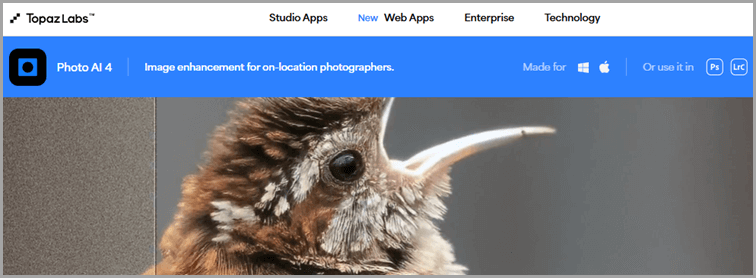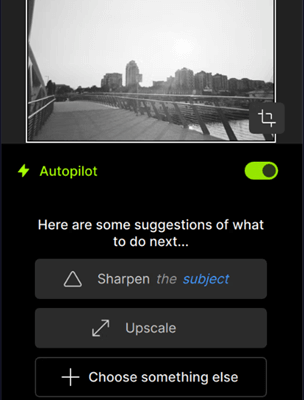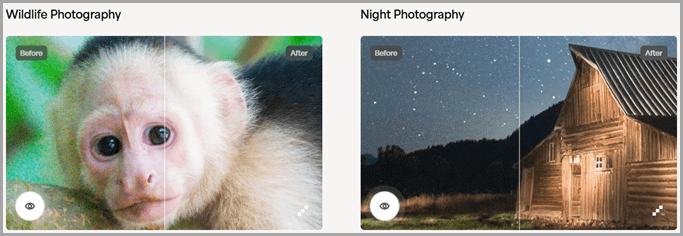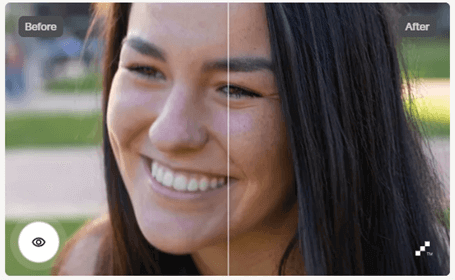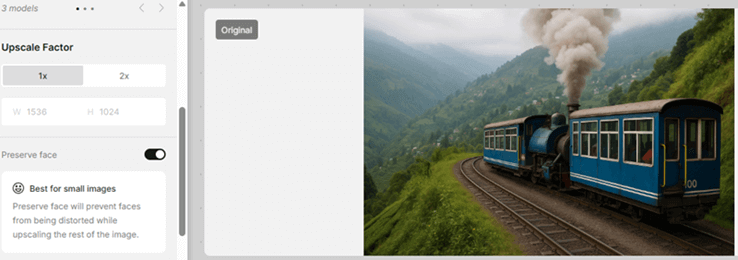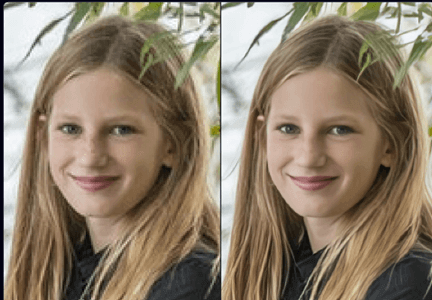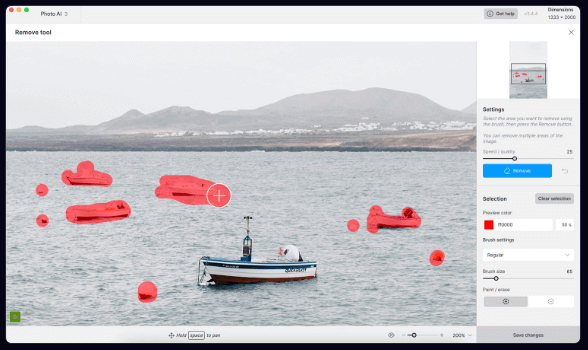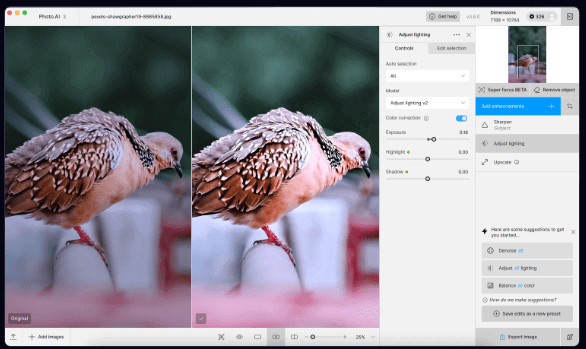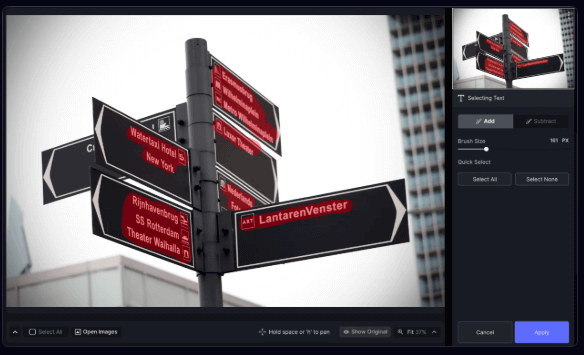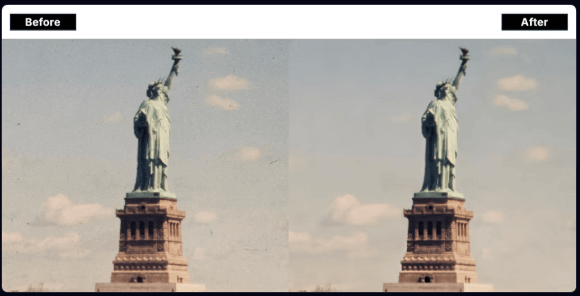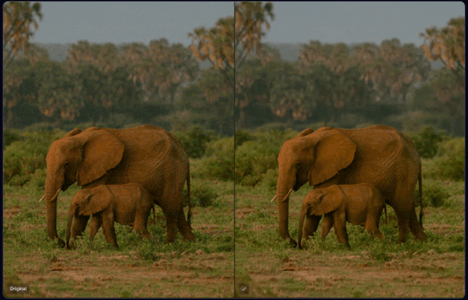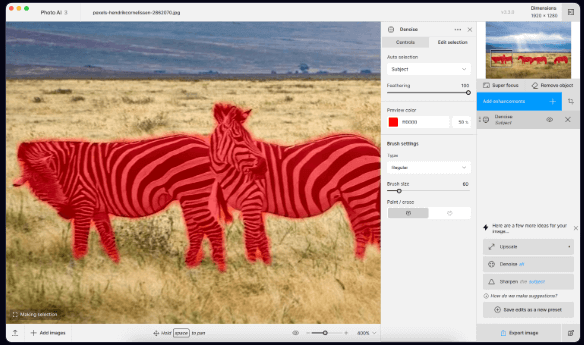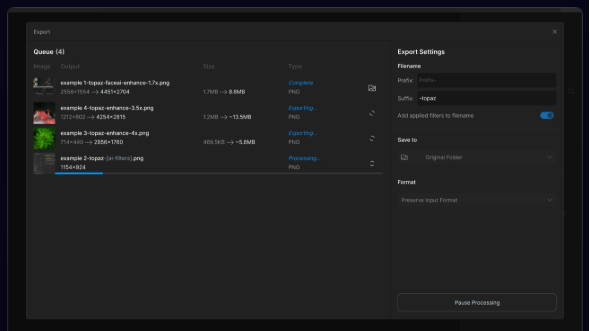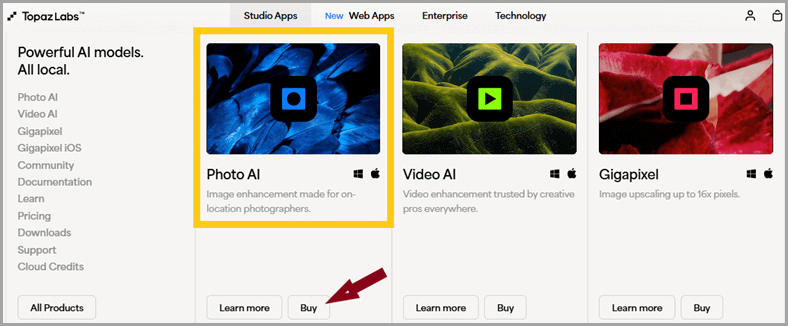Topaz Photo AI Review (2025)
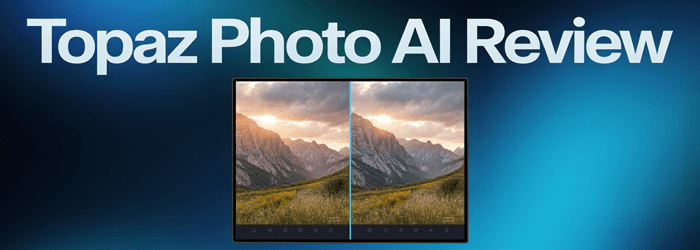
In this review, we’ll explore how Topaz Photo AI combines deep learning and automation to turn your imperfect shots into gallery-worthy images, while keeping your workflow effortless and efficient. From quick fixes to more advanced tweaks, we explore what the software can actually do. You’ll get an overview of its key features, pricing, ease of use, and whether it deserves a spot in your photo-editing toolkit.
Topaz Photo AI Review: My Honest Verdict
After spending time with Topaz Photo AI, I found it to be a powerful tool for enhancing image quality, especially when dealing with noise, blur, or low resolution. What impressed me most was its Autopilot feature, which intelligently applied corrections without much manual tweaking. Even slightly out-of-focus portraits were salvaged with surprising clarity, and the upscaling tool worked wonders for preparing prints.
I also appreciated how transparent and safe the software felt. It doesn’t alter original files unless you choose to, and it clearly outlines what each AI model is doing. That said, the processing speed can be sluggish, especially during upscaling.
Overall, Topaz Photo AI delivers impressive results for photographers who value quality and convenience.
Pros
Cons
Why do you Need Topaz Photo AI?
Topaz Photo AI improves blurry images with cutting-edge, AI-powered enhancement and is trusted by professional photographers worldwide. Backed by Topaz Labs’ proven expertise in image processing, this tool sharpens, denoises, and upscales with remarkable precision, without the need for any manual tweaking.
What is Topaz AI?
Topaz Photo AI is a desktop tool that enhances images using advanced artificial intelligence. It offers denoising, sharpening, face recovery, and upscaling. All these features are aimed at boosting photo quality with minimal effort. I found its interface intuitive, primarily when used with Lightroom and Photoshop. Whether fixing imperfect shots or batch-editing for print and web, Topaz Photo AI delivers speed and precision. With frequent updates and pro-level features, it has become a reliable way to reduce noise, restore detail, and simplify my editing workflow.
Features of Topaz AI
1) Autopilot
Topaz Photo AI’s Autopilot selects the best AI models and automatically analyzes your photo, detects subjects, and intelligently suggests enhancements. To turn on the Autopilot mode, you need to turn it on from the right panel.
2) Denoise
This AI-powered tool removes digital noise from photos, especially those shot in low light or at high ISO. While testing this feature, I noticed it preserves subtle details better than most competitors and rarely leaves behind blotchy artifacts.
3) Sharpen
The sharpen module targets blurred areas and enhances edge clarity, making photos appear crisp and natural. Topaz Photo AI stands out by analyzing the photo’s content to avoid over-sharpening, which often plagues similar tools.
4) Upscale
Upscaling with Topaz Photo AI allows you to increase image resolution up to 16x while retaining exceptional detail and texture. Compared to other upscaling solutions, Topaz produces more lifelike results, making it ideal for preparing prints or crops from older photos.
5) Recover Faces
The advanced face recovery tool restores clarity, skin texture, and natural detail to portraits. You will notice that even low-resolution or vintage faces regain definition, thanks to their “Realistic” and “Creative” options for different editing moods.
6) Remove Object
Using context-aware AI, this feature removes unwanted objects or distractions and reconstructs the background seamlessly. I would recommend experimenting with this tool for travel or street photos. It’s surprisingly effective and faster than traditional healing brushes.
7) Adjust Lighting
This adjustment balances brightness, contrast, and exposure across the image. The tool lets you correct both underexposed and overexposed areas in one pass. This unique capability can prove to be useful for photos with tricky lighting.
8) Balance Color
The balance color tool corrects color temperature, tint, and saturation, providing vibrant, natural tones. While using this feature, one thing I noticed is that it often fixes color casts in shadows or highlights with just a single slider movement.
9) Preserve Text
Topaz Photo AI intelligently recognizes and enhances text in images, ensuring it remains sharp and legible after processing. This is valuable for scanned documents, signs, or any image where text clarity is important.
10) Dust & Scratch Removal
The AI-powered dust and scratch remover targets blemishes, specks, and surface scratches. Unlike traditional clone tools, it reconstructs affected areas based on the surrounding texture, making old or scanned photos look new again.
11) RAW Denoise
RAW Denoise is specifically optimized for RAW files, leveraging the full sensor data to achieve higher-quality results. While testing, I found that denoising before exporting as DNG yields more detail and less color noise when processing in Lightroom.
12) Masking & Selection
AI-driven masking lets you precisely select and edit specific areas of your photo. There is also an option that lets you refine mask edges quickly. It is a game-changer for subjects with hair, fur, or complex outlines.
13) Batch Processing
Batch mode processes multiple images at once using your chosen settings. This feature is essential for high-volume photographs. I recommend using custom presets to streamline your workflow and ensure consistency across shoots.
14) Export Options
Topaz Photo AI offers a variety of export formats, including TIFF, JPEG, PNG, and DNG for RAW. You can also adjust output size, color profile, and compression settings, providing control for web, print, or archival needs.
30-Days Free Trial
Getting Started with Topaz AI
Getting started with Topaz Photo AI is relatively simpler than you may have expected. Here are the steps to begin with:
Step 1) Visit the Topaz Labs website to purchase and download the Photo AI installer. Complete the installation as directed.
Step 2) Open Topaz Photo AI as a standalone app or through Photoshop/Lightroom plugins.
Step 3) Log in using your Topaz Labs account, or begin the free trial to explore the app’s features.
Step 4) Drag and drop images into the interface or use the “Open” button.
Step 5) Let Autopilot analyze your photo and suggest optimal enhancements, then adjust settings as desired.
30-Days Free Trial
User Experience and Interface
Topaz Photo AI features a clean, intuitive interface with most controls in a single sidebar, offering easy navigation and accessibility for both beginners and professionals. The Autopilot mode enables automated enhancements, while manual fine-tuning remains available for advanced users. Batch processing and image previews enhance workflow efficiency.
Performance and Reliability
Topaz Photo AI delivers excellent performance in noise reduction, sharpening, and upscaling, with efficient batch processing and impressive AI-driven results. Reliability is high for most tasks, though performance is resource-intensive, and occasional artifacts may occur, especially with complex subjects or when overused.
Pricing (cost-effectiveness)
Topaz Photo AI is priced at a one-time fee of $199 for a single license, which includes all features and one year of unlimited upgrades. After the first year, users can renew the upgrade license for $99 annually to access new updates. A free trial is also available.
Refund Policy
Topaz Photo AI offers a 30-day, no-questions-asked refund policy for individual or standard license purchases. Refunds are typically processed within 5-7 business days. Subscriptions, cloud credits, and Pro licenses are non-refundable. Customers can contact support for refunds or assistance within this period.
Payment Modes
Topaz Photo AI accepts multiple payment modes, including PayPal, Credit, and Debit cards, ensuring a smooth and flexible purchase or renewal process for users. This covers both full license purchases and upgrades, supporting convenient transactions worldwide.
Customer Support and Resources
Topaz Photo AI offers customer support via email at help@topazlabs.com, with support tickets typically addressed within 24 business hours. Users can also submit issues directly through an in-app support button. Additional resources include a community forum for bugs, troubleshooting guides, and detailed tutorials to assist users.
How do I troubleshoot common issues in Topaz Photo AI?
Here are some common issues and solutions for users of Topaz Photo AI:
- Application hangs or becomes unresponsive when used as a plug-in in Lightroom.
Solution: Fully close all plugins, including Lightroom, before opening Topaz. If you are using a Mac, clear the plist files. Then, disable antivirus/firewall/VPN/proxy that might interfere, and rerun a clean installer. Adjust Mac security settings to allow apps from identified developers. - System crashes when running Photo AI standalone or as a plugin.
Solution: Update your GPU drivers. Test the standalone app independently. Use supported plugins only. On Mac, delete Photo AI’s CoreML cache folder and update to the latest OS version. - Stuck in trial mode despite owning a license.
Solution: Use the version you own from your account, log in with the purchase email, and clear saved credentials conflicting with this email. - Photo AI repeatedly downloads model files, causing delays.
Solution: Disable any antivirus, firewall, VPN, or proxy software during installation and usage to prevent download blocks. Rerun the installer to fix missing model files. - Loss of raw format or lens correction profile after processing.
Solution: For Lightroom workflows, consider sending TIFF files instead of RAW. Use the Develop module’s Photo > Edit In option to retain lens corrections through Photo AI. - “Subject only” sharpening feature causes poor output or no smoothing.
Solution: Disable “subject only” in the sharpening panel. Resize large images down before processing to match pixel density.
If problems persist, collect logs and system profile, then contact Topaz AI Support.
How Topaz Photo AI Compares with Key Competitors?
1) Adobe Express
Adobe Express excels at rapid visual creation with user-friendly AI tools. While great for web-ready images, it lacks deep editing control for intricate photo work.
30-Day Free Trial
2) AVCLabs
AVCLabs Photo Enhancer AI delivers impressive automated enhancements. It is especially strong in face refinement and detail recovery, though it may not suit hands-on editors.
Download For Free
3) Fotor
Fotor strikes a practical balance between simplicity and functionality. It offers helpful AI tools but leans more toward general design than advanced image correction.
Lifetime Basic Free Plan
FAQs
Conclusion
Topaz Photo AI stands out for smart image enhancement with minimal effort. Whether you’re restoring sharpness, reducing noise, or batch-editing like a pro, it streamlines your photo workflow. Try Topaz Photo AI and elevate your photography game today. Go ahead; test it out and let your edits do the talking.


